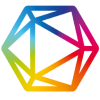Sport lesions caused by athletics practice
Abstract
Being a highly physical demanding sports, athletics depends on efficient training to overcome all physical demands without lesions. The aim of the present study was to analyze the types of lesions and their causes. The sample was constituted by forty-three athletes, sixteen males and twenty-seven females, 23.2 years of average age. A questionnaire containing five open questions and five closed questions was used as an instrument to determine the major lesions caused by athletics practice. The results showed that 84% of the athletes had already had some kind of lesions: 77% of which occurred during training and 23% during contest. The most frequent lesions were distension, tendinitis, twisting, contraction and inflammation. Legs were the most affected parts: 85% for jumpers, 85% for runners and 60% for throwers. When the lesions occurred, 76% of the jumpers, 84% of the runners and 85% of the throwers had no other health problem, but 52.7% of the athletes were in a state of anxiety before the contest and 13.8% had difficulties in concentrating on the contest. As for treatment 55.5% went to see a physiotherapist, and 16.6% went to see the medical doctor and the physiotherapist. The consequences of the lesions for the athletes’ performance were the following: 75% missed important contest events and 70% missed training for several months while they recuperated from their lesions. The results led to the conclusion that the best means to prevent lesions is to use adequate sites and equipments, efficient and individualized training coached by qualified specialists.Downloads
Download data is not yet available.
Metrics
Metrics Loading ...
Published
2008-06-06
How to Cite
1.
Feitoza JE, Martins Junior J. Sport lesions caused by athletics practice. JPhysEduc [Internet]. 2008Jun.6 [cited 2025Nov.4];11(1):139-47. Available from: https://periodicos.uem.br/ojs/index.php/RevEducFis/article/view/3806
Issue
Section
Original Articles
• Authors retain the copyright and full publishing rights without restrictions.

This work is licensed under a Creative Commons Attribution 4.0 International License.








_1502.jpg)











